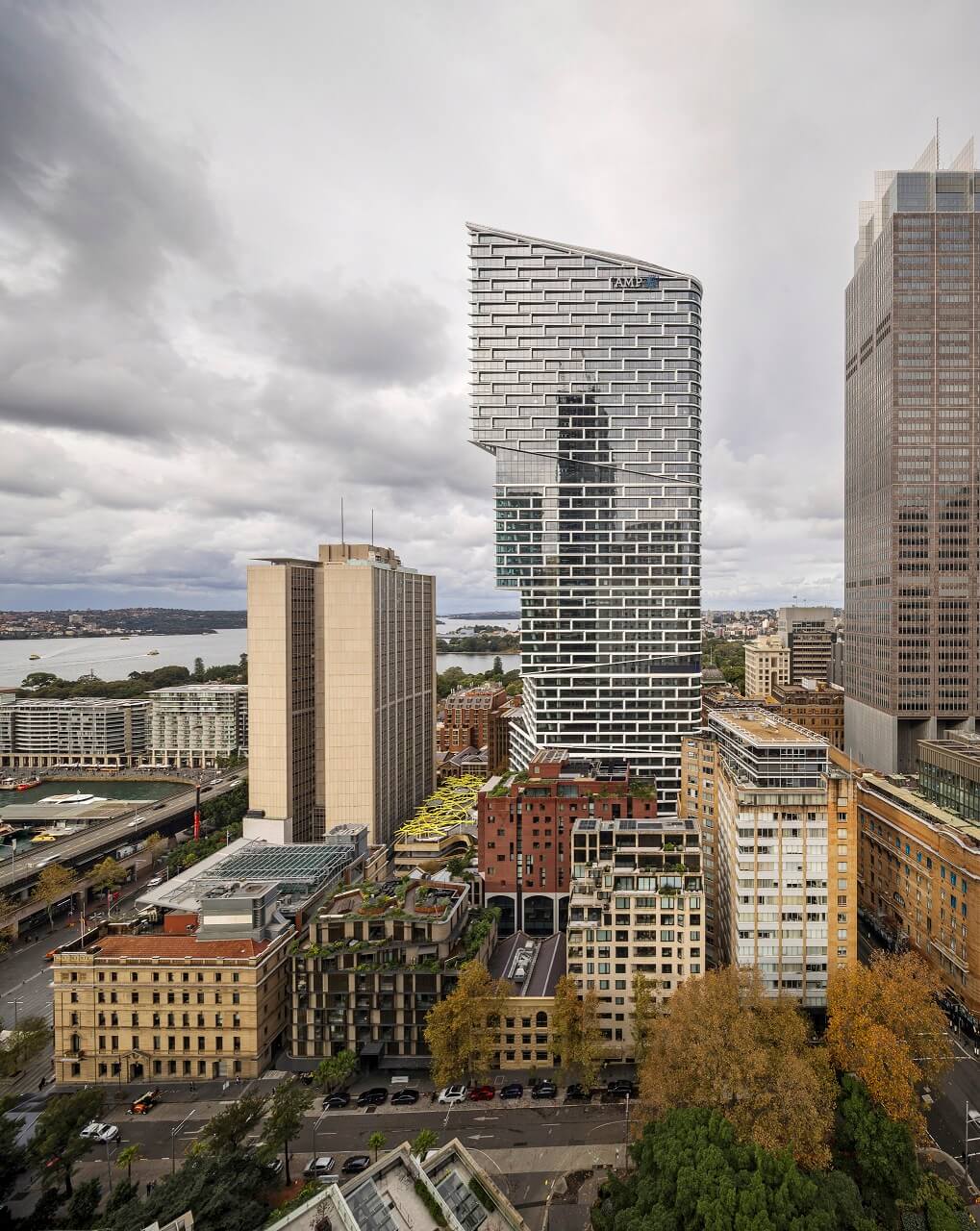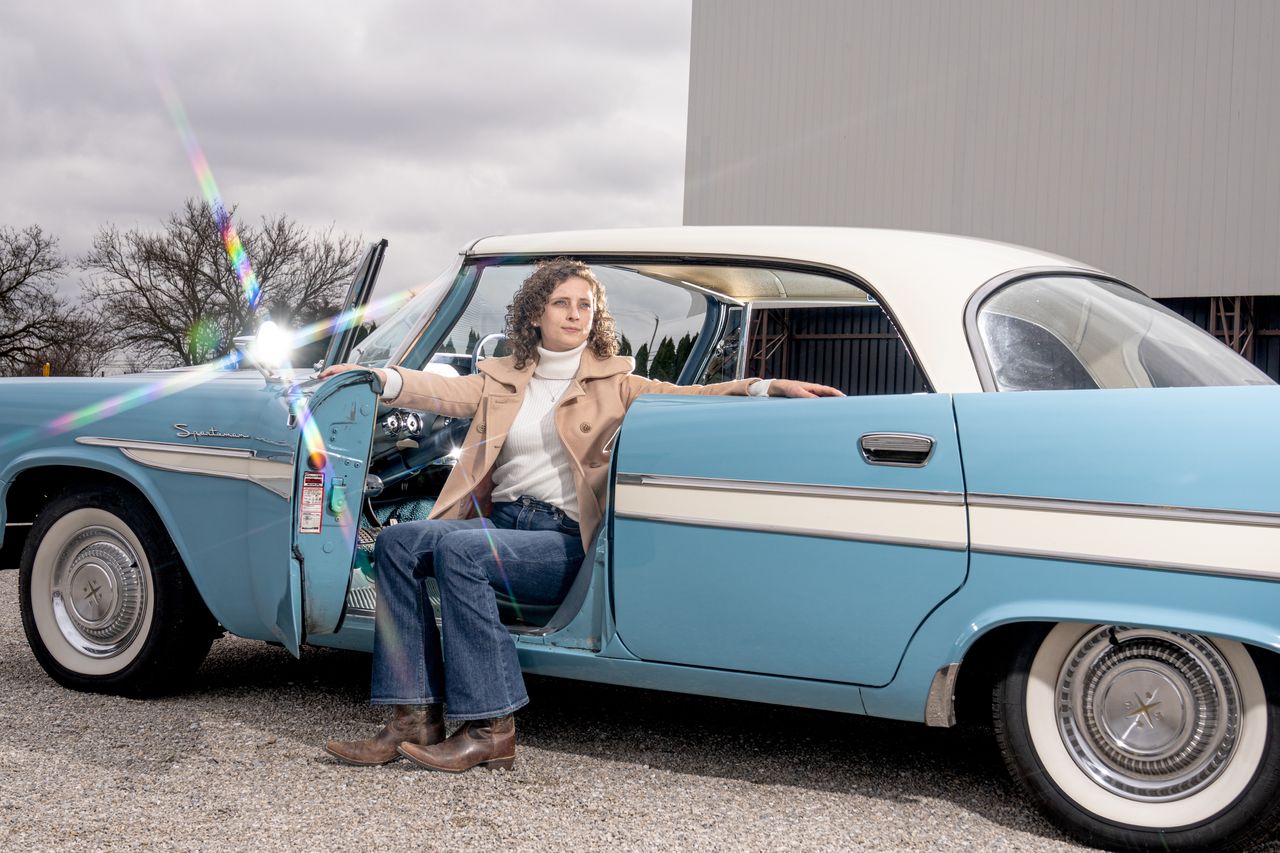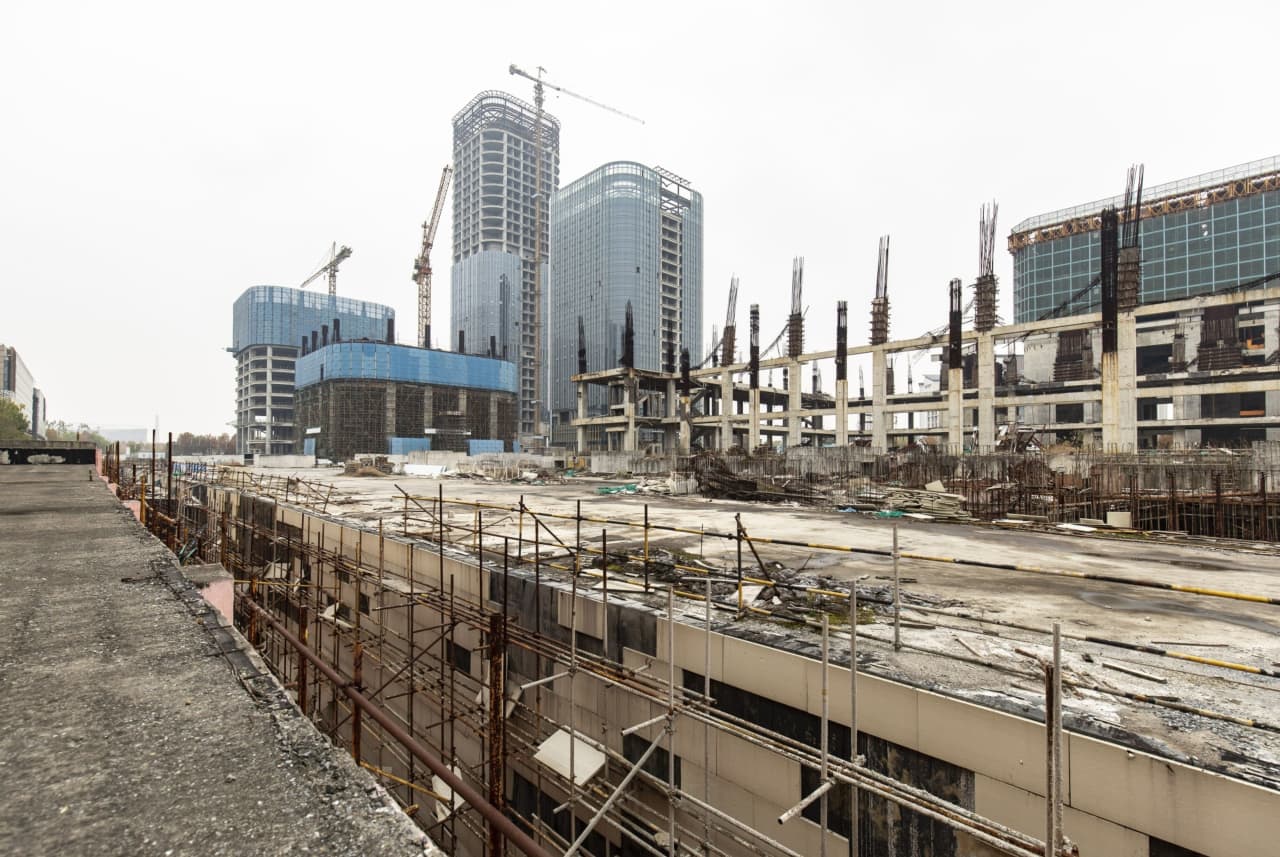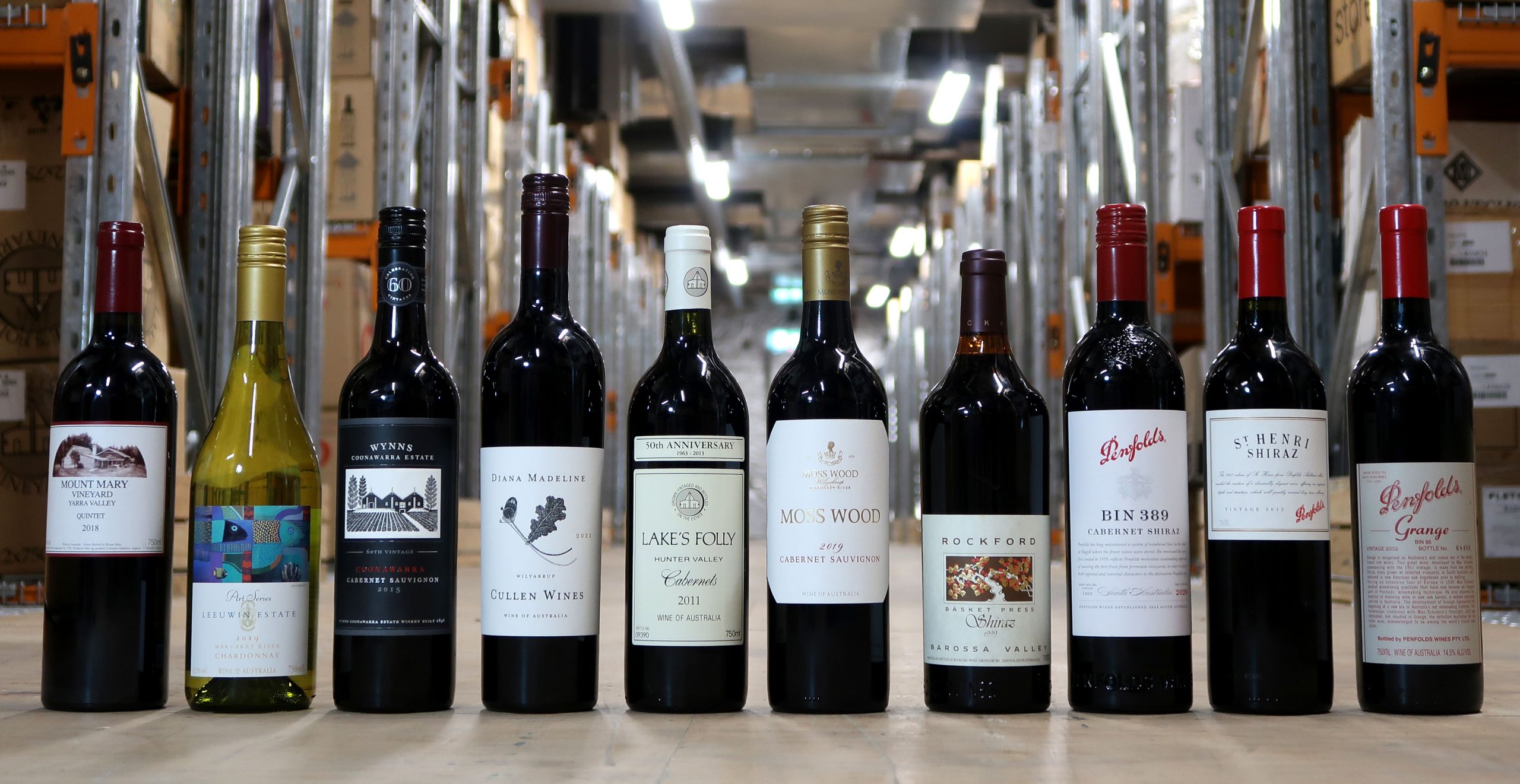How Sydney’s AMP Quay Quarter Tower went above and beyond – and onto the world stage
The landmark building has been awarded an international architecture prize for its ‘radical sustainability’
T o understand the level of detail involved in the design and construction of the 50-storey Quay Quarter Tower, you need to know about the cab ride Dan Cruddace, project director from BVN, and project architect Fred Holt for 3XN took early one morning across Sydney Harbour Bridge.
“It was 2016 and we were trying to address solar radiance from the building,” Dan says. “We realised that for two hours from 6am from April to September, the reflectivity in one spot of the tower could potentially blind some of the drivers on the bridge.”
After their run across the bridge, they modified the design of a select number of windows on the upper block of what was best known to most Sydneysiders as the AMP building, now Quay Quarter Tower.
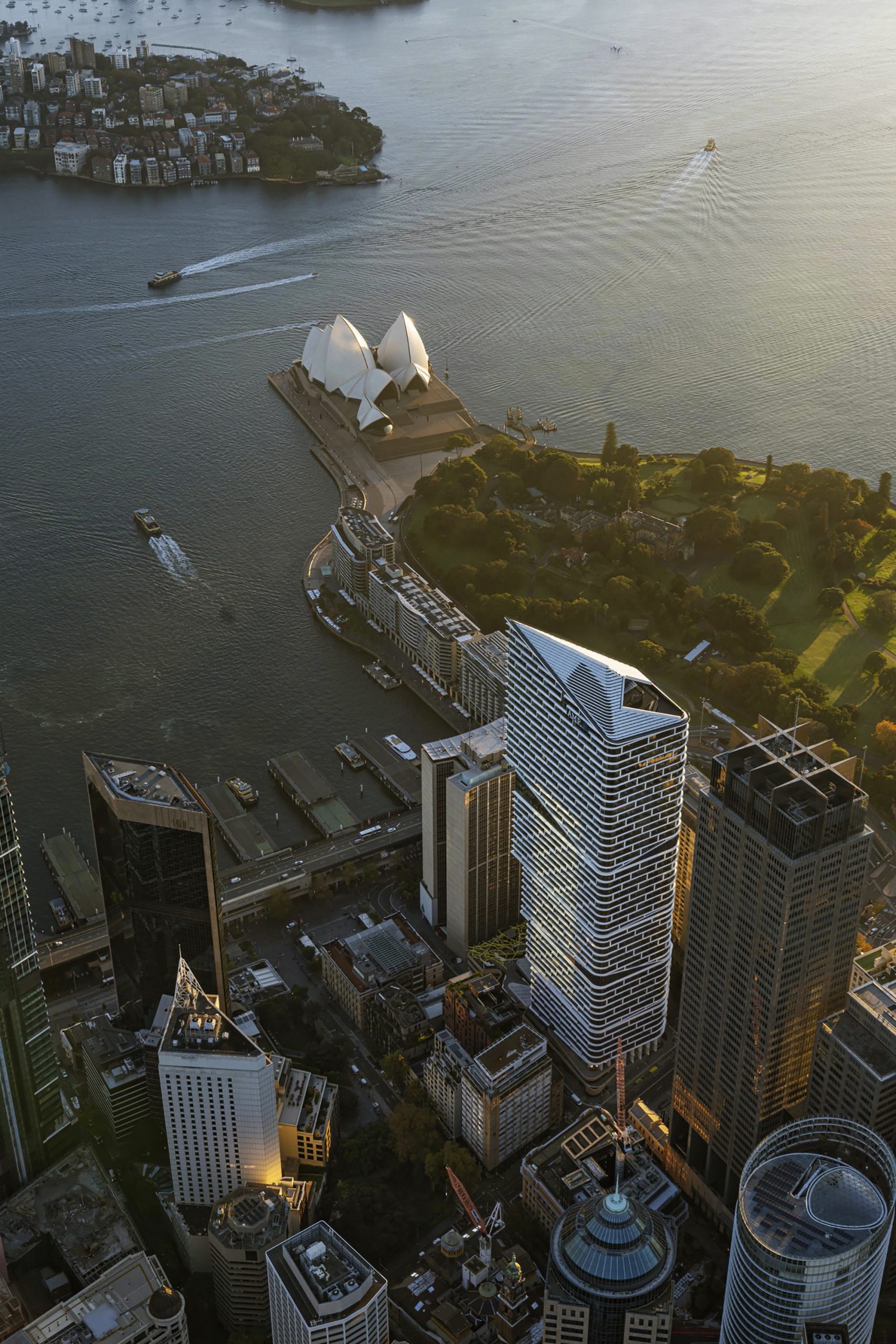
“We developed a system of tilting the glass on the upper block by 2.3 degrees which resolved that issue,” Cruddace says.
It’s a testament to the attention to even the smallest details of this complex build that appears as a series of five stacked ‘boxes’, each slightly pivoted to manage light, connectivity between floors and the challenging topography of the Circular Quay site.
Award-winning local architectural firm BVN were chosen to partner with Danish firm 3XN, who won the international design competition for Quay Quarter Tower, partnering with construction giant Multiplex, to transform the AMP building, constructed in 1976, while retaining as much of the original building as they could.
Now the building has been recognised for its approach to sustainable building practices, with the announcement of the International High Rise Award in Frankfurt overnight. Rather than demolish the building completely, as part of the construction process, 7500 tonnes in carbon dioxide emissions by saving the southern side and core of the building.
Although AMP is the ‘anchor tenant’ for the building, several businesses, including Deloitte, have signed on to lease space, with the building expected to be fully occupied by mid 2023.
Cruddace says the team were very aware of the building’s place in Sydney’s story, in every sense.
“It’s at the front door of Sydney and Australia in terms of world precincts and connectivity to the harbour – it had that kind of gravitas,” says Cruddace. “It’s a once-in-a-generation project.”
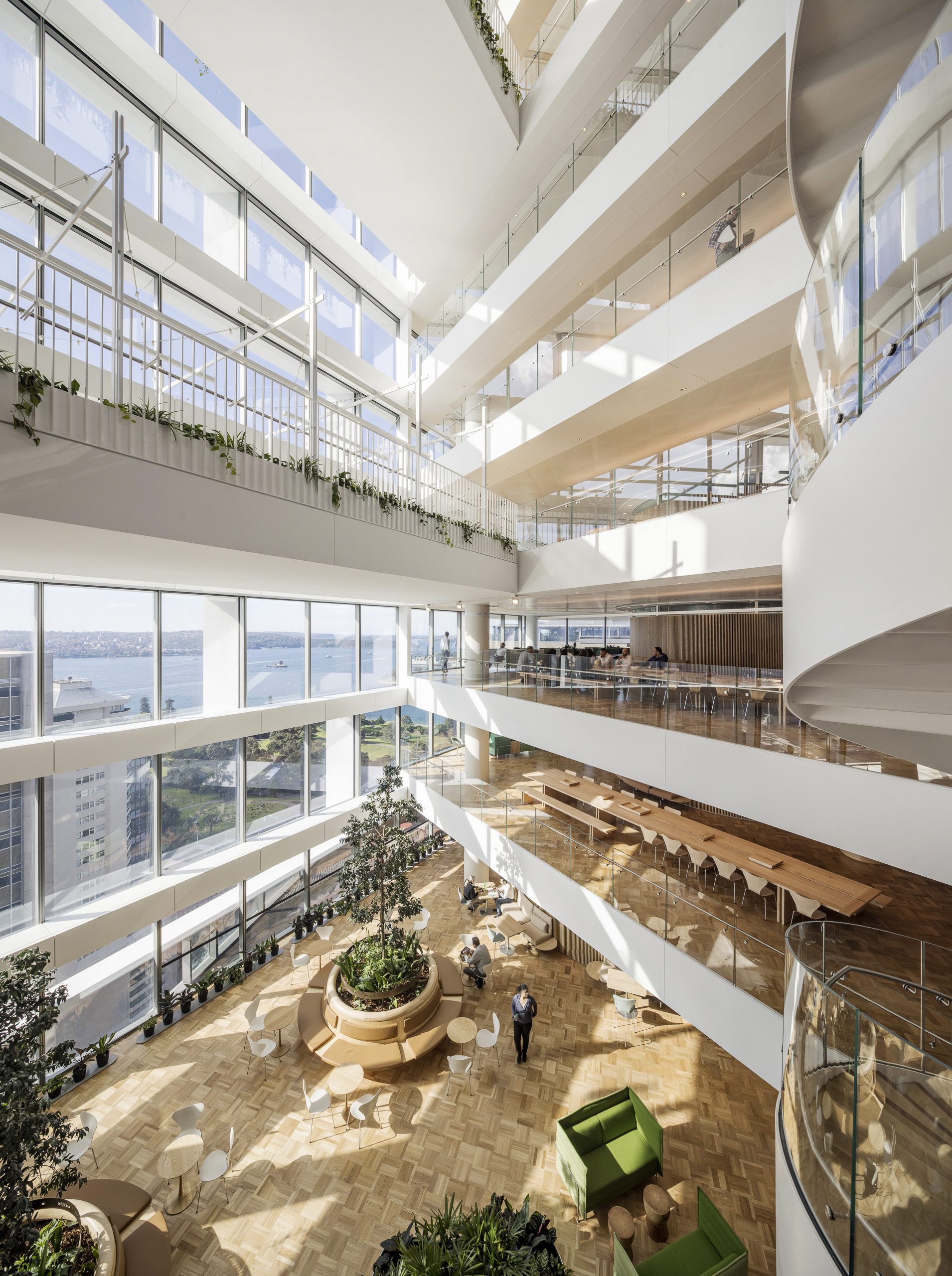
Positioned in front of the historic Museum of Sydney, with the newly opened Quay Quarter Lanes to its left, visitors and office workers within are always aware of their neighbourhood, thanks to a skilful manipulation of levels and glazing so carefully crafted to control the worst of the summer sun from every angle that no blinds are required. Instead, occupants of each floor can appreciate views of nearby buildings – historic and contemporary – as well as through lines to the harbour and the iconic bridge.
“It’s an amazing site but the original building had so many problems with it in terms of layers of poor planning and permeability and there were real issues with the topography,” Cruddace says.
The rotation of the ‘boxes’ also allow for outdoor terraces populated with landscape design by ASPECT so that, even on the 30th floor, bees can be seen hovering over the flowering plants on the terrace.
If there is a recurring theme in this project, it’s connectivity. Every aspect of this building, from the market hall designed by UK designer Tom Dixon at street level, to the natural site lines to surrounding buildings and the harbour, to the stunningly sculptural spiral staircase that links several office floors, has been considered in terms of its relation to the other elements.
At the same time, spaces allow for intimate gatherings, private meetings or even solitude. It’s clear that at the heart of this project is the people who use it, whether they’re staff familiar with the layout or casual visitors to the retail spaces at street level.
Holt says it has raised the bar for what high rise buildings can and should be.
“The expectation previously for high rises was that they were just for providing efficiently stacked workspaces,” he says. “And they still have to be there. But users are expecting the experience to be engaging and to have spaces for collaboration and all those things that make us feel human.”
The team of BVN and 3XN have also won the design competition for Sydney Fish Market, an equally complex site due for completion in 2023.
For more stories like this, order your copy of Kanebridge Quarterly magazine here
This stylish family home combines a classic palette and finishes with a flexible floorplan
Just 55 minutes from Sydney, make this your creative getaway located in the majestic Hawkesbury region.
The marketplace has spoken and, at least for now, it’s showing preference for hybrids and plug-in hybrids (PHEVs) over battery electrics. That makes Toyota’s foot dragging on EVs (and full speed ahead on hybrids) look fairly wise, though the timeline along a bumpy road still gets us to full electrification by 2035.
Italian supercar producer Lamborghini, in business since 1963, is also proceeding, incrementally, toward battery power. In an interview, Federico Foschini , Lamborghini’s chief global marketing and sales officer, talked about the new Urus SE plug-in hybrid the company showed at its lounge in New York on Monday.
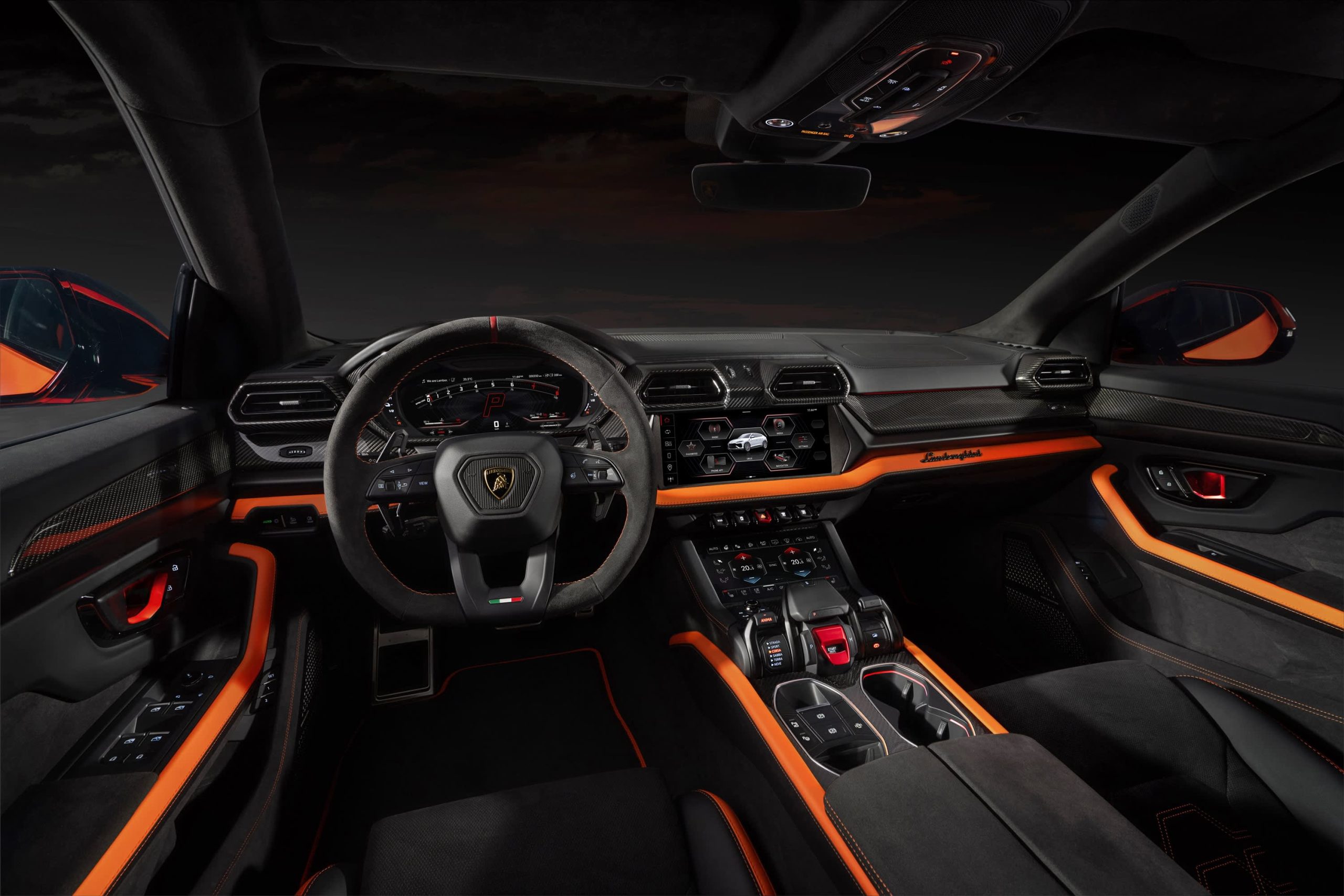
Lamborghini
The Urus SE SUV will sell for US$258,000 in the U.S. (the company’s biggest market) when it goes on sale internationally in the first quarter of 2025, Foschini says.
“We’re using the contribution from the electric motor and battery to not only lower emissions but also to boost performance,” he says. “Next year, all three of our models [the others are the Revuelto, a PHEV from launch, and the continuation of the Huracán] will be available as PHEVs.”
The Euro-spec Urus SE will have a stated 37 miles of electric-only range, thanks to a 192-horsepower electric motor and a 25.9-kilowatt-hour battery, but that distance will probably be less in stricter U.S. federal testing. In electric mode, the SE can reach 81 miles per hour. With the 4-litre 620-horsepower twin-turbo V8 engine engaged, the picture is quite different. With 789 horsepower and 701 pound-feet of torque on tap, the SE—as big as it is—can reach 62 mph in 3.4 seconds and attain 193 mph. It’s marginally faster than the Urus S, but also slightly under the cutting-edge Urus Performante model. Lamborghini says the SE reduces emissions by 80% compared to a standard Urus.
Lamborghini’s Urus plans are a little complicated. The company’s order books are full through 2025, but after that it plans to ditch the S and Performante models and produce only the SE. That’s only for a year, however, because the all-electric Urus should arrive by 2029.
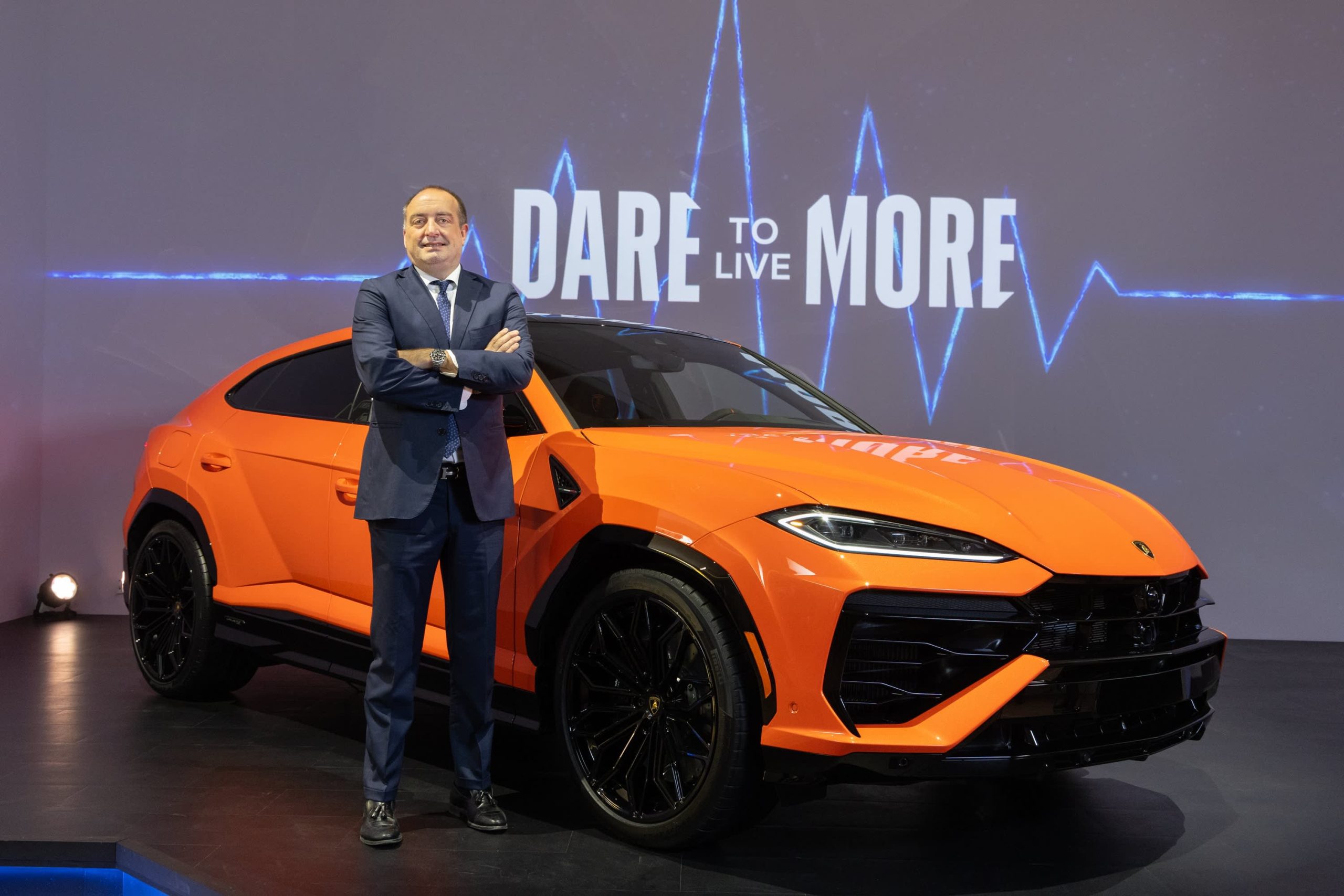
Lamborghini
Thanks to the electric motor, the Urus SE offers all-wheel drive. The motor is situated inside the eight-speed automatic transmission, and it acts as a booster for the V8 but it can also drive the wheels on its own. The electric torque-vectoring system distributes power to the wheels that need it for improved cornering. The Urus SE has six driving modes, with variations that give a total of 11 performance options. There are carbon ceramic brakes front and rear.
To distinguish it, the Urus SE gets a new “floating” hood design and a new grille, headlights with matrix LED technology and a new lighting signature, and a redesigned bumper. There are more than 100 bodywork styling options, and 47 interior color combinations, with four embroidery types. The rear liftgate has also been restyled, with lights that connect the tail light clusters. The rear diffuser was redesigned to give 35% more downforce (compared to the Urus S) and keep the car on the road.
The Urus represents about 60% of U.S. Lamborghini sales, Foschini says, and in the early years 80% of buyers were new to the brand. Now it’s down to 70%because, as Foschini says, some happy Urus owners have upgraded to the Performante model. Lamborghini sold 3,000 cars last year in the U.S., where it has 44 dealers. Global sales were 10,112, the first time the marque went into five figures.
The average Urus buyer is 45 years old, though it’s 10 years younger in China and 10 years older in Japan. Only 10% are women, though that percentage is increasing.
“The customer base is widening, thanks to the broad appeal of the Urus—it’s a very usable car,” Foschini says. “The new buyers are successful in business, appreciate the technology, the performance, the unconventional design, and the fun-to-drive nature of the Urus.”
Maserati has two SUVs in its lineup, the Levante and the smaller Grecale. But Foschini says Lamborghini has no such plans. “A smaller SUV is not consistent with the positioning of our brand,” he says. “It’s not what we need in our portfolio now.”
It’s unclear exactly when Lamborghini will become an all-battery-electric brand. Foschini says that the Italian automaker is working with Volkswagen Group partner Porsche on e-fuel, synthetic and renewably made gasoline that could presumably extend the brand’s internal-combustion identity. But now, e-fuel is very expensive to make as it relies on wind power and captured carbon dioxide.
During Monterey Car Week in 2023, Lamborghini showed the Lanzador , a 2+2 electric concept car with high ground clearance that is headed for production. “This is the right electric vehicle for us,” Foschini says. “And the production version will look better than the concept.” The Lanzador, Lamborghini’s fourth model, should arrive in 2028.
Just 55 minutes from Sydney, make this your creative getaway located in the majestic Hawkesbury region.
Consumers are going to gravitate toward applications powered by the buzzy new technology, analyst Michael Wolf predicts









